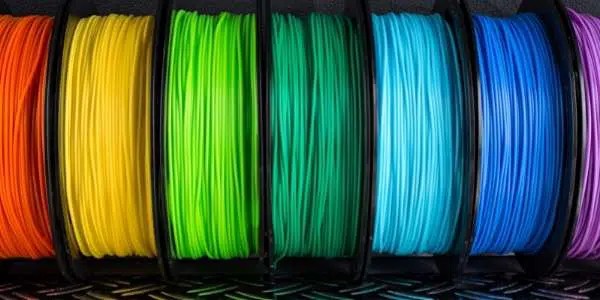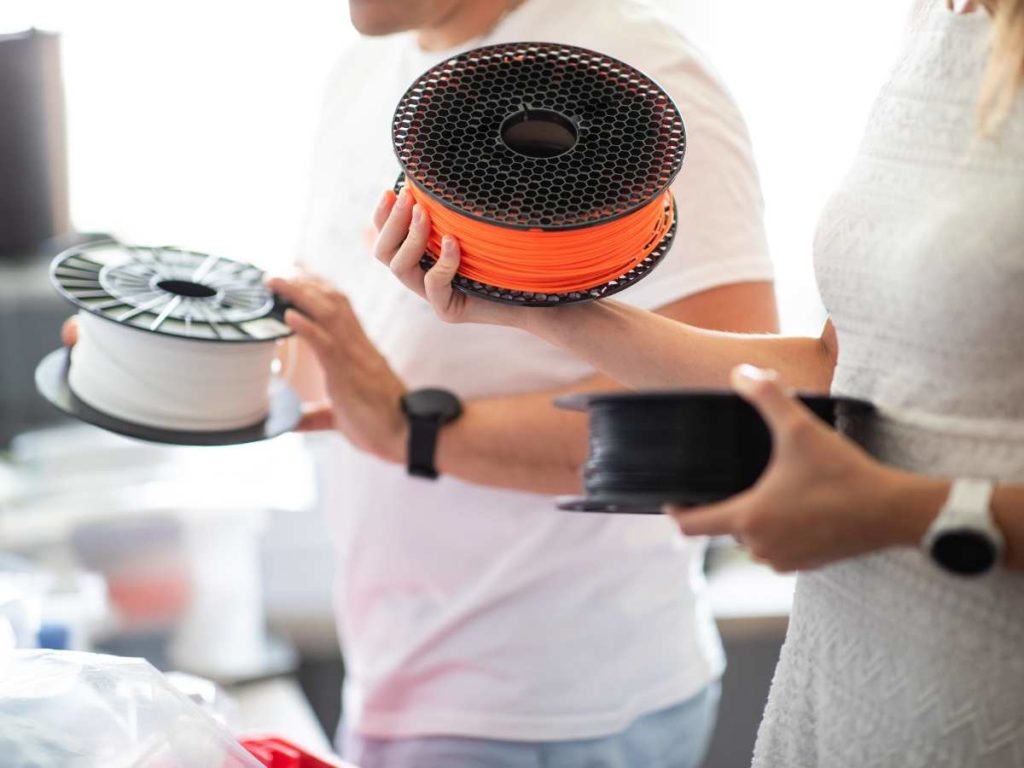3D printing is an exciting journey of discoveries. With the wide range of 3D printers and filaments, deciding which filament is ideal for your 3D printer can be a little overwhelming. The filament properties will determine if it’s suitable for a specific 3D printer.
3D printers can use most filament types. However, some filaments are specific to some 3D printers. For example, filaments melt at different nozzle temperatures 160 – 260°C (320 – 500°F). Filaments that melt at high temperatures work with 3D printers with these temperature specifications.
This article will look at the different types of filaments, their properties, and the best 3D printers to use. Keep reading.
How To Select the Best Filament for Your 3D Printer
Once you buy your 3D Printer, the next major decision you’ll make is the type of filament to use. Unfortunately, randomly choosing a filament based on its appearance won’t work. You need to select a filament that’s compatible with your 3D printer.
When determining the ideal filament for your 3D printer, do the following:
- Determine the extruder and the temperature at which they operate.
- Find out the ideal filament diameter to use. The most common filament diameters are 1.75 mm and 2.85 mm (0.06 inch and 0.11 inch). However, some printers use the rarely used 3 mm (0.11 inch) filament.
- Determine the melting temperature of the filament.
Some filaments are compatible with most 3D printers, while others can only be used on specific 3D printers.
The major types of filaments often used in 3D printing are:
- Polylactic Acid (PLA)
- Acrylonitrile butadiene styrene (ABS)
- Nylon
- Flexible filament (TPEs)
- Soluble filaments (HIPS and PVA)

PLA Filament
PLA filament is a popular choice for 3D printing. They’re inexpensive and have a low melting point. 3D printers with an operating temperature of between 157°C and 170°C (315 – 338°F) are ideal for use with PLA filaments.
Unfortunately, PLA has a low glass transition temperature of 111 – 145°F (44 – 63°C), making it unsuitable for high-temperature applications. It works best on 3D printers with a bed temperature of 60°C (140°F).
This Overture PLA Filament, available on Amazon.com, is 1.75 mm (0.06 inch) in diameter, has dimensional accuracy, and is compatible with multiple 3D printers.
ABS Filament
ABS filament is tough, non-toxic, and durable. It has a high melting point of 210 – 250°C (410 – 482°F ). This filament tends to warp when used on a cold heat bed. So, the print bed should have a temperature of 80 – 110°C (176 – 230°F).
One of the downsides of ABS filament is its acrid, unpleasant odor. Therefore, it’s best to use this filament with a closed frame 3D printer in a well-ventilated room.
This Amazon Basics ABS Filament, available on Amazon.com, is 1.75mm (0.06 in) diameter, has a one-year warranty, and is compatible with most 3D printers.
Nylon
Nylon is one of the cheapest filaments. Unfortunately, since it melts at a higher temperature, 230°C (446°F ), nylon filaments are only used in 3D printers designed to handle such high temperatures. Besides the extruder temperatures, the print bed also needs to be heated because nylon tends to curl when printed on a cold bed.
TPEs
Thermoplastic elastomers (TPEs) share the same elasticity as rubber, making this filament a great choice for customized 3D prints. The primary features of TPE filaments are:
- Soft and flexible
- Fatigue resistance
- High impact strength
- Resistance to low and high temperatures -30 – 140°C (-22 – 284°F)
- Excellent shock absorption
TPEs are best used in 3D printers with an extruder temperature of 210 – 260°C (410 – 500°F). The bed temperature should also be unheated at -110°C (-166°F). The ideal 3D printer for TPEs filaments should have a direct drive extruder system, a low print speed of 5–30 mm/s, and a cooling fan to keep the print bed temperature very low.
Soluble Filaments (HIPS and PVA)
High Impact Polystyrene (HIPS) filament is low cost, has great impact resistance, has a great matte texture, and has great aesthetic qualities.
The HIPS filament is best used on a print bed with a temperature of 55 – 65 °C (131 – 149 °F). Its hot-end temperature is 240°C (464°F).
Polyvinyl alcohol (PVA) is a water-soluble filament used as a support material. Although PVA can be used in various extrusion 3D printers, it’s best used in dual extrusion 3D printers.
Ideal print conditions for PVA filaments include:
- A nozzle temperature of 180 – 200°C (356 – 392°F)
- Print bed temperature of 45 – 60°C (113 – 140°F)
- Part fan cool: Up to 50%
Since these filaments have unique print conditions, it’s best to pair them with 3D printers with the right features.
Tips on How To Identify Filament Compatibility
Although you need to know the filament details, such as its diameter and melting point, the following tips will help you quickly determine a filament’s suitability to your 3D Printer:
- Use a heated bed for all filaments. However, if your 3D printer does not have a heated bed, you can only use PLA filaments.
- Choose a filament whose recommended printing temperature is below your 3D printer’s maximum printing temperature.
- Assume the maximum printing temperature is 240°C (464 °F) if your 3D printer only uses PLA/ABS filaments.
- Use flexible filaments, like TPU and Ninjaflex, with specific extruders. If your printer is not marketed as suitable for printing flexibles, assume it does not have the right extruder for flexible filaments.
- Consider your 3D printer’s spool size when buying filaments. Find out if your 3D printer’s spool holder can comfortably handle the filament’s spool size. Always go for a larger filament spool if it can fit your printer’s spool. This way, you won’t need to change the filament spool frequently or interrupt prints.
- Confirm if your printer is designed to use filaments made by the same manufacturer.
This video analyzes the different types of filaments and how to identify their compatibility with the various 3D printers:
3D Printer and filament compatibility are critical for a successful print. There are instances when you can modify your Printer to make it more compatible with more filaments. For example, you can install an all-metal hot end to increase the Printer’s maximum temperature.
Conclusion
Before buying filaments, you need to make sure you can use them with your printer. PLA and ABS are the most sought-after filaments because they can easily be paired with most low-end 3D printers. The various 3D printers in the market have unique features, making them suitable or unsuitable for some filaments.
- Written by:
- Ben
- Last updated:
- 11/23/2023
About Ben
I started 3D printing since 2013 and have learned a lot since then. Because of this I want to share my knowledge of what I have learned in the past years with the community. Currently I own 2 Bambulab X1 Carbon, Prusa SL1S and a Prusa MK3S+. Hope you learn something from my blog after my years of experience in 3D printing.

